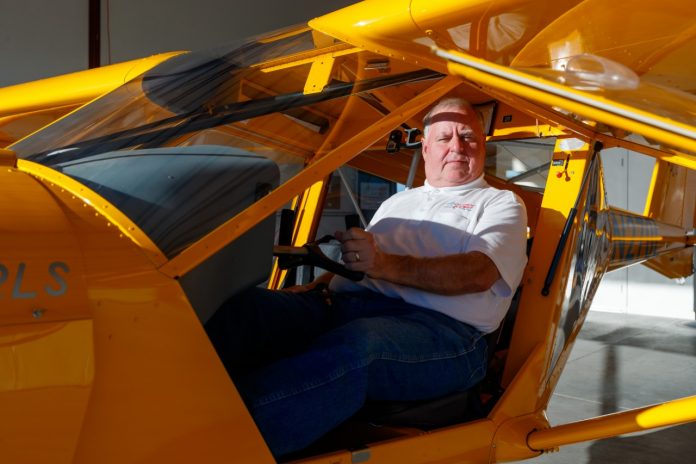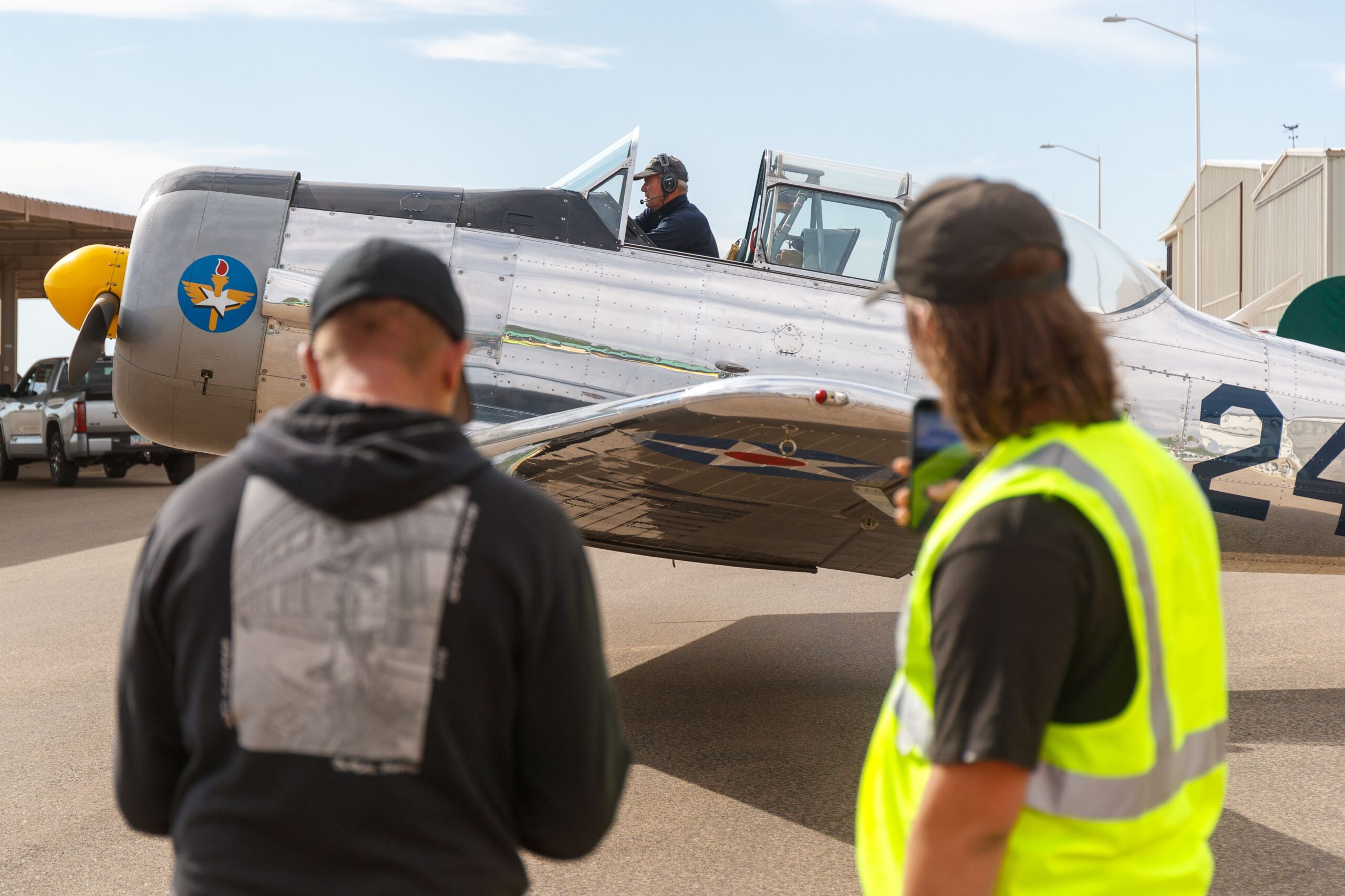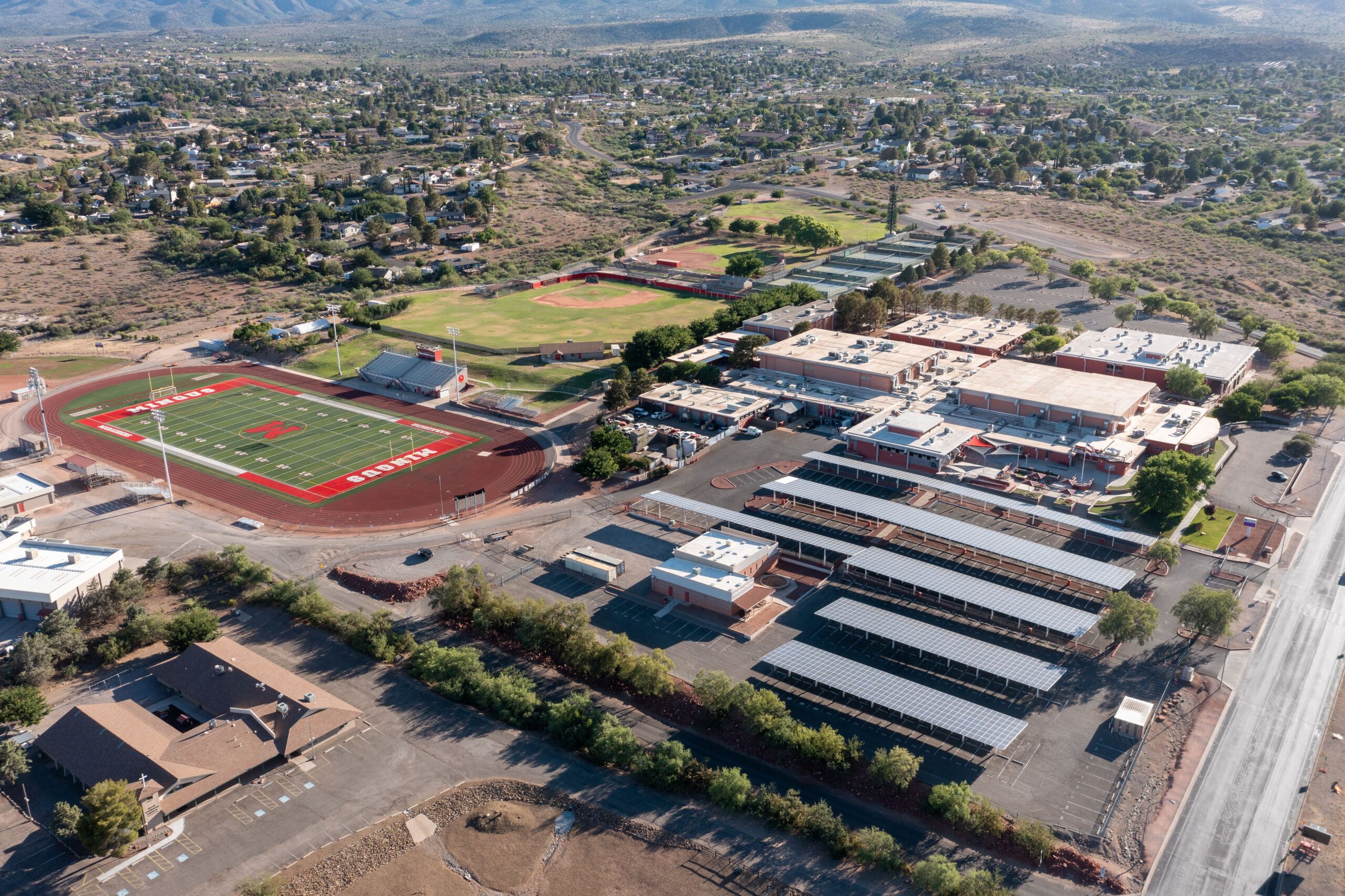Lance Leighnor grew up in Kansas, outside of Wichita. At the time, it was considered one of the air capitals of the world. Many kids at his high school had fathers who were engineers or factory workers at one of the many businesses in the area that supported aviation.
He quickly became hooked on flying, remembering himself as “the kid in the family that went plane crazy.”
In college, Leighnor joined a college flying club and acquired his own pilot’s license. While he eventually went into work in IT, the passion for flying never went away. When he moved to Northern Arizona from Overland Park, Kansas in 2016, Leighnor wanted to help those like him who had the same passion for aviation.
Leighnor started his business — Leighnor Aircraft — in 2017 in Prescott with two Cessna 162 Skycatchers. At the beginning of 2020, he expanded his business and now has a hangar at the Cottonwood Airport. Between the two locations, he now has eight planes. The one that presently sits in Cottonwood is an A-22 named Big Bird, due to its distinct yellow color. He’s found the interest in the area to be high, even if the present weather conditions are less than ideal.
“Over here it’s exploded,” he said. “That airplane [Big Bird] flew almost 70 hours in July. That’s more than double the prior months. And we’re talking July, in the middle of this heat. That’s morning and late afternoon for the most part.”
The weather does pose a challenge. In the summer, the heat makes flying at low altitudes — which most training flights take place at — feel like a sauna. In the winter, things like fog, rain, ice and snow can create their own problems.
The weather is not the only challenge.
“Aviation is expensive. There’s no getting around that,” Leighnor said.
But regarding his goal of continuing to expand the business and possibly add another plane in Cottonwood, he stated a desire for people “to have the ability to come out, be able to get into a small plane, learn and not have it cost an arm and a leg.”
“Most schools that are flying four seaters are going to tell you $10,000 to $15,000 for a private pilot’s license,” Leighnor said. “We can do it for $6,000 to $8,000 every day of the week in these light sports. The sport pilot’s license you can probably do from $3,000 to $4,000 — and that’s with everything.”
There are two ways to acquire a private pilot’s license. One is through a Part 141 school, like Prescott’s Embry-Riddle, which is a highly organized, structured and costly flight school program.
The other is Part 61, how his business operates, which is more of an old-school approach. Part 141 and Part 61 refer to the FAA’s guidelines for the respective types of flight schools.
“We’re teaching the exact same things because at the end of the day, when a pilot goes for the check ride, they all have to pass the same practical exam and the same written exam,” he said. “They all have to do the same oral exam. How you learn is totally up to you. But we do it the old school way, before Part 141 was ever in existence.”
He also noted that while some places do a boot camp approach, his recommendation is slower. Leighnor suggested that students do no more than two to three lessons a week, so as not to get overloaded. He also recommended no fewer than one a week to avoid having to relearn things.
Leighnor estimated that it would take roughly three months for someone to acquire a private pilot’s license. That takes a minimum of 40 hours of total time and 20 with an instructor in the plane. He noted that the national averages are more like 60 to 70 hours of total time and estimated 25 to 30 hours of instructor time.
He also wanted to make it clear that while it takes a lot of time and energy, people of different ages can fly. Leighnor said that while some people feel too old, many of his customers are in their 60s or 70s. Similarly, he and part-owner and pilot Will Hallier both expressed an interest in making flying available to younger kids. Leighnor was 19 when he began to fly while Hallier was 15.
“There are a lot of kids who want to be pilots when they’re young and can’t figure out how to do that,” Hallier said. “It’s absolutely impossible if you don’t have places to rent airplanes in town. Very few 17- or 18-year-old kids are going to have the motivation to drive over the mountain and go to Prescott three times a week to learn how to fly airplanes.”
“That Lance has been able to find three to four instructors that are fairly local here and others that are willing to drive here and teach kids is the best thing about it,” he added.
And while the weather is something that prospective pilots will have to be patient with, Leighnor added that Northern Arizona is a great place to learn to fly.
“Just look to your east, there’s a good reason to learn right there,” he said. “We’re in some of the most beautiful country in the entire United States.”



